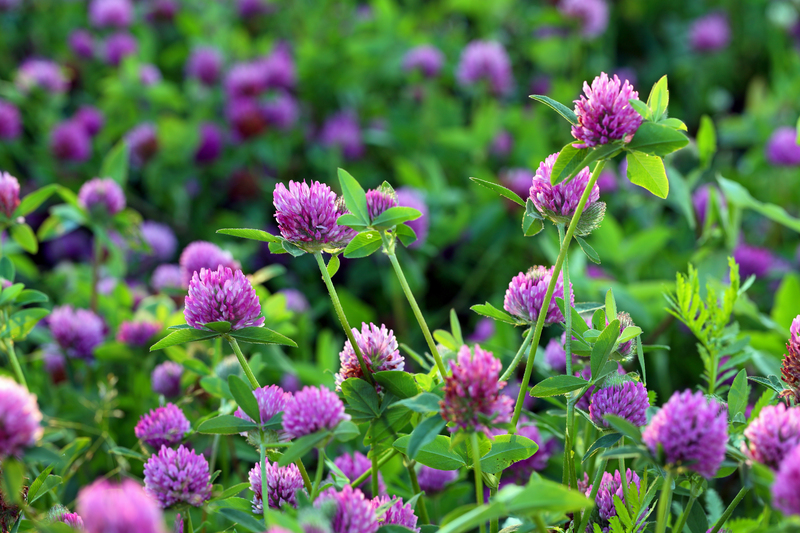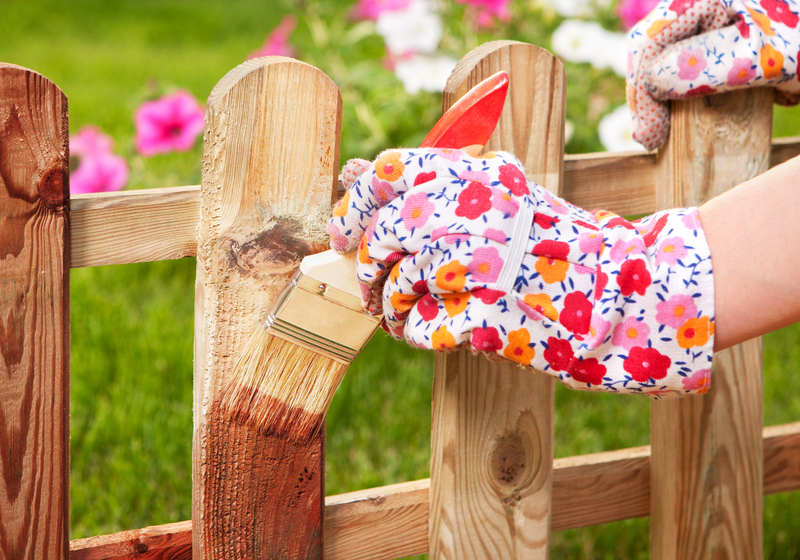Achieve Orchid Blooming Success with Expert Tips
Posted on 26/08/2025
Achieve Orchid Blooming Success with Expert Tips
Do you dream of vibrant, blooming orchids gracing your home, but struggle to keep these exotic beauties thriving? Orchids are notorious for being challenging houseplants, yet with the right approach, anyone can unlock their stunning floral displays. In this comprehensive guide, you will discover a wealth of knowledge and actionable steps designed to skyrocket your orchid blooming success.
Understanding the Orchid: Basics for Blooming Success
Before diving into orchid blooming tips, it's important to comprehend what makes orchids unique. Orchids belong to one of the largest plant families on earth, with over 25,000 species and myriad hybrids. While each type may have slight variations, most share similar needs when it comes to inducing spectacular blooms.
Orchid Varieties and Their Blooming Habits
- Phalaenopsis (Moth Orchid): Known for long-lasting blooms; tends to flower annually or bi-annually.
- Cattleya: Loved for large, fragrant flowers; typically blooms once per year.
- Dendrobium: Prolific bloomer with many flowers on each spike; likes a distinct dry rest.
- Oncidium: Often called "Dancing Lady"; prefers dappled light and regular feeding.
Recognizing your orchid type helps tailor specific care for maximum blooming success.

Creating the Perfect Orchid Environment
Light: The #1 Factor for Blooms
Healthy orchid blooming starts with proper lighting. Most orchids enjoy bright, indirect sunlight. Direct sun can scorch leaves, while too little light leaves orchids flowerless. Here's how to assess and optimize it:
- South or East-facing windows are ideal. Filter light with sheer curtains if necessary.
- Leaves should be vibrant green: dark green = not enough light; yellowish = too much light.
- Supplemental grow lights help during darker months or in less sunny homes.
Consistent, adequate light is vital if your goal is encouraging healthy orchid blossoms.
Temperature and Humidity: Mimicking Natural Conditions
Orchids are tropical by origin, thus flourishing between 60-80?F (16-27?C) during the day, with a night temperature drop of 10-15?F. This fluctuation often triggers bloom spikes.
- Day temps: 70-80?F (21-27?C)
- Night temps: 60-65?F (16-18?C)
- Humidity: 40-60% is ideal. Use humidifiers, pebble trays, or regular misting.
<_underline>Never place orchids near cold drafts or hot radiators. Consistency is key to orchid flower success!
Watering Techniques for Blooming Orchids
Overwatering is the most common killer of orchids and a major obstacle to blooming. Instead, adopt these expert habits:
- Check roots before watering: Silvery roots = thirsty; green = hydrated.
- Allow potting medium to dry slightly between waterings.
- Water early in the day so foliage dries by nightfall, preventing rot.
- Use tepid, distilled, or rain water whenever possible. Tap water with high minerals can lead to salt buildup.
Remember: Orchids prefer to be underwatered rather than overwatered!
Airflow: The Overlooked Secret
Orchid roots are adapted to breezy, airy conditions in nature. Stale, stagnant air breeds disease. Encourage good airflow with a nearby fan (set on low) or open window for health and more blooms.
Best Orchid Potting Mix and Repotting Practices
Choosing the Right Medium
Regular soil suffocates orchids! Specialized orchid potting mixes enable successful flowering by letting roots breathe. The most popular media are:
- Bark: Long-lasting, airy, good for Phalaenopsis and Cattleya.
- Sphagnum moss: Retains moisture; best for young or moisture-loving orchids.
- Coconut husk, perlite, charcoal: Common additives to improve drainage and aeration.
If your orchid's roots have outgrown their pot or the medium breaks down, it's time to repot--generally every 1-2 years.
How to Repot Your Orchid for Maximum Blooms
- Gently remove the orchid from its old pot, taking care not to damage roots.
- Trim any mushy, rotten, or dead roots with sterilized scissors.
- Set the orchid in a clean pot just big enough for the roots.
- Surround with fresh dampened mix, tucking among the roots without compressing tightly.
- Wait a week to water, allowing cut roots to heal and avoid rot.
Tip: Orchid blooming is often triggered by mild root disturbances--a fresh start boosts growth and floral displays.
The Right Feeding Regimen for Flowering Orchids
Fertilize for Flowers!
Orchids consume few nutrients in the wild, yet in pots, regular doses ensure prosperous blooming. Use a balanced or "bloom-booster" fertilizer, such as 20-20-20 or one with slightly higher phosphorus (the middle number).
- Feed every 2 weeks during active growth with half-strength fertilizer.
- Reduce or stop fertilizing during dormancy or after blooming.
- Leach the pot with plain water monthly to avoid salt buildup.
*Remember: Less is more. Too much fertilizer can burn roots and hinder orchid blooming success!*
When and How to Use Bloom-Boosters
A fertilizer with a higher middle number (like 10-30-20) can be used in the weeks prior to and during spike formation. This provides just the right nutrients to encourage flower development!
Expert Blooming Tips: Advanced Orchid Care Secrets
Inducing a Flower Spike
If your orchid has healthy leaves and roots but won't bloom, try these expert orchid blooming tips:
- Increase night/day temperature difference. Move your orchid to a cooler spot at night for a few weeks.
- Boost humidity and keep watering steady, but don't fertilize excessively.
- Try a two-week "drought": reduce water to mimic natural dry spells, then resume normal watering to trigger blooms (especially for Dendrobiums and Oncidiums).
- Ensure the plant is mature enough--young orchids won't flower.
These techniques help replicate the natural cues orchids use to start blooming.
Pruning and Post-Bloom Care
After your orchid flowers fade, proper care ensures repeat flowering:
- For Phalaenopsis: Cut flower spike above the node (bump) below the last flower to encourage side shoots.
- For Cattleya, Dendrobium, etc.: Cut spent flower spikes at the base--these only bloom once per cane or stem.
- Resume regular care; adjust feeding and light as needed.
- Repot if roots or medium require it.
With this cycle, you can enjoy orchid blooms year after year.
Orchid Dormancy: The Rest Before the Show
Many orchids rest between flowering periods. This dormant phase is crucial for forming new flower spikes.
- Reduce watering and fertilizer during this phase (often in winter).
- Maintain bright, indirect light.
- Patience pays off! Don't disturb roots unless absolutely necessary.
Understanding and respecting dormancy ensures repeated blooming success.
Common Mistakes Blocking Orchid Blooms and How to Fix Them
Top Orchid Blooming Mistakes
- Insufficient light (most common issue--orchids need more than many realize)
- Over- or under-watering
- Poor potting mix or compacted roots
- Fertilizing too much or too little
- Ignoring seasonal changes and dormancy
- Sudden environmental changes (e.g., drafts, repotting during bloom, etc.)
Correcting these mistakes will greatly enhance your chances of achieving orchid flowering success.

FAQs: Unlocking More Orchid Blooming Secrets
How do I know when my orchid is about to bloom?
Look for a thick, emerging spike (not a root) from the crown or pseudobulb. The spike may appear as a pointed green shoot, which will develop buds over time.
My orchid hasn't bloomed in a year! What should I do?
Review your care: check light levels, ensure correct watering, and provide temperature drops at night. Sometimes, repotting or applying a bloom-stimulator fertilizer is needed.
Can I get multiple orchids to flower at once?
Absolutely! By standardizing your care routine and treating each variety's specific requirements, you can synchronize blooming for a spectacular floral show.
Conclusion: Your Path to Orchid Blooming Success
Achieving consistent, awe-inspiring orchid blooms is absolutely within your reach. By applying the expert orchid blooming tips above, you're setting your plants up for vitality and frequent flower displays. Remember: successful orchid flowering hinges on recreating their natural environment--light, temperature swings, humidity, gentle airflow, proper watering, and judicious feeding. Avoid common mistakes, understand your orchid's cycles, and enjoy the process. With patience and care, you'll soon be rewarded with breathtaking orchid blooms that elevate your indoor garden to new heights!
Why not put these tips into action and watch your orchids bloom with success? Happy growing!



